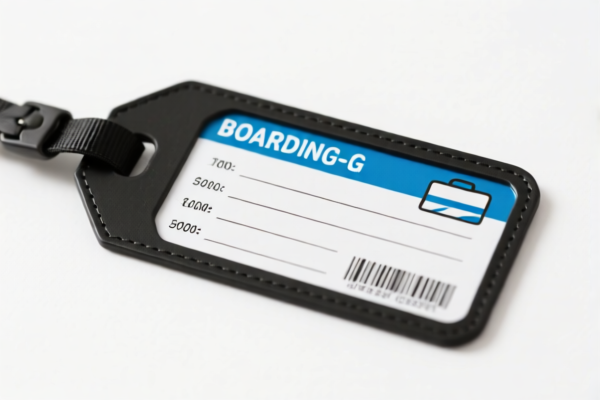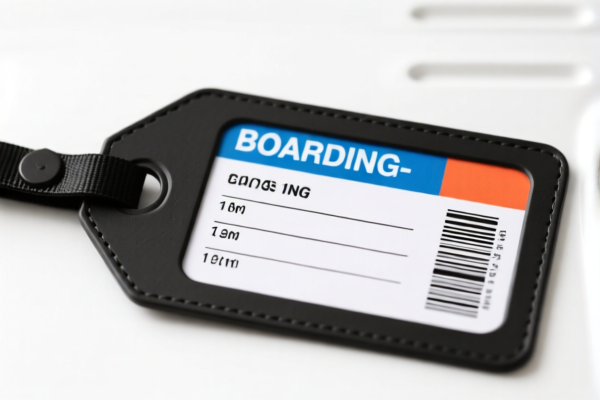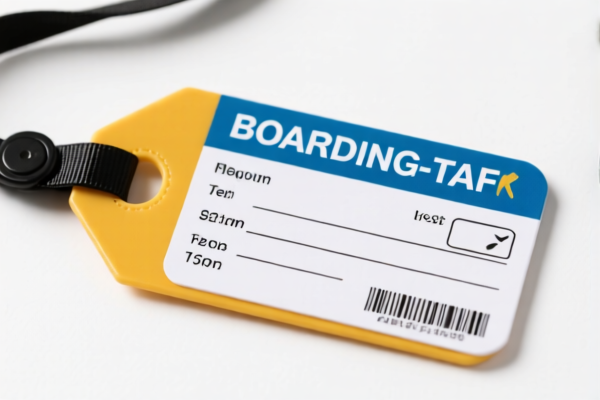| HS Code | Official Doc | Tariff Rate | Origin | Destination | Effective Date |
|---|---|---|---|---|---|
| 4202919090 | Doc | 59.5% | CN | US | 2025-05-12 |
| 4202995000 | Doc | 62.8% | CN | US | 2025-05-12 |
| 4205000500 | Doc | 57.9% | CN | US | 2025-05-12 |
| 4205008000 | Doc | 55.0% | CN | US | 2025-05-12 |
| 3923900080 | Doc | 58.0% | CN | US | 2025-05-12 |
| 3926903300 | Doc | 36.5% | CN | US | 2025-05-12 |
| 3926904800 | Doc | 33.4% | CN | US | 2025-05-12 |




Luggage Tags
Luggage tags are small identifiers attached to luggage, serving to associate the luggage with its owner during transport. They are typically made of plastic, metal, or leather, and display identifying information such as the owner’s name, address, phone number, and email address.
Material
- Plastic: The most common material due to its low cost, durability, and availability in various colors and designs. Often PVC or polycarbonate.
- Metal: Typically aluminum or stainless steel, offering a more premium look and increased durability. Often used for higher-end luggage or for a more secure identification method.
- Leather: Provides a classic aesthetic and a more luxurious feel. Generally less durable than plastic or metal and requires more care.
- Fabric: Less common, often used as part of a larger luggage accessory or as a decorative element.
Purpose
The primary purpose of a luggage tag is to enable easy identification of luggage, particularly when it is lost or misdirected during travel. They help airlines, hotels, and other transport services reunite luggage with its rightful owner.
Function
- Identification: Clearly displays owner contact information.
- Tracking: Some tags incorporate tracking technology like QR codes, NFC chips, or Bluetooth connectivity, allowing for real-time location monitoring.
- Decoration: Tags can be personalized with unique designs or patterns, adding a visual element to luggage.
- Privacy Protection: While displaying contact information, many tags are designed to obscure information when not in use or to provide a layer of privacy.
Usage Scenarios
- Air Travel: Essential for identifying checked baggage.
- Train Travel: Useful for identifying luggage on trains and in train stations.
- Cruise Travel: Helps identify luggage during embarkation, disembarkation, and throughout the cruise.
- General Travel: Useful for any situation where luggage may be separated from its owner, such as bus travel, hotel stays, or shipping.
Common Types
- Standard Tags: Simple plastic tags with a loop for attachment and a space to write information. Often include a flap to conceal information.
- Metal Tags: Durable and often feature a more sophisticated design. May include engraving for permanent identification.
- Leather Tags: Offer a classic look and a more luxurious feel.
- QR Code Tags: Utilize QR codes that link to online profiles with contact information, reducing the need to display personal details directly on the tag.
- NFC Tags: Employ Near Field Communication technology, allowing smartphones to read the tag and access owner information.
- Bluetooth Tags: Connect to smartphone apps for real-time location tracking and lost luggage alerts.
- GPS Tags: Utilize GPS technology for precise location tracking, often requiring a subscription service.
- Adjustable Strap Tags: Feature an adjustable strap that securely fastens to luggage handles.
- Light-Up Tags: Incorporate LED lights for increased visibility in low-light conditions.
Luggage tags fall under articles for the conveyance or packing of goods, of plastics.
Here are the relevant HS codes based on the provided reference material:
- 3923900080: This HS code covers “Other” articles of plastics; stoppers, lids, caps and other closures, of plastics. This includes luggage tags made of plastic. The first two digits (39) indicate the chapter for plastics and articles thereof. The next two digits (23) specify articles for the conveyance or packing of goods. The final digits (900080) denote “Other” within this category. The base tariff is 3.0%, with an additional 25.0% tariff, increasing to 30.0% after April 2, 2025, resulting in a total tariff of 58.0%.
According to the provided reference material, the HS code options related to 'LUGGAGETAGS' are limited, with only the following 1 found.
Customer Reviews
The page is well-organized, but I found it a bit confusing that there are multiple HS codes listed. It would be helpful to have a brief explanation of when each code applies.
Great resource for understanding the tariff rates on luggage tags. The 58% rate for 3923900080 is clear and well-explained, which is exactly what I needed for my business.
I was looking for HS codes related to luggage tags, and this page had all the details I needed. The breakdown of the 3923900080 code was especially helpful.
This site made it easy to find the right HS code for plastic luggage tags. The 58% tariff for 3923900080 was exactly what I needed for my export plans.